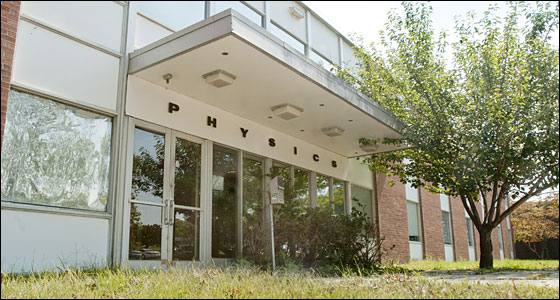Stop 9
Physics

Welcome to Bldg. 510, home to Brookhaven Lab’s Physics Department. From its inception in 1947, Brookhaven National Laboratory has had a major focus on physics. Ideas born and developed inside these walls have led to countless new discoveries in our understanding of matter and energy and their interactions.
Five of the Lab’s seven Nobel Prizes were awarded for work in physics. Three of those discoveries were made at the Alternating Gradient Synchrotron. Another was awarded for a theoretical breakthrough that showed a violation of a supposedly absolute law of physics known as parity conservation, and you’ll hear later in the tour about the fifth, which was awarded to a BNL chemist.
Many other important physics discoveries have been made at our facilities, including at the ones you’ve seen on this tour. A large number of applications have also come from the Lab’s basic research in physics.
Looking ahead, exciting avenues of physics research with future applications are opening up at the Lab. Many of these will involve cross-disciplinary efforts among specialists in physics, chemistry, biology, and medicine. Physicists at Brookhaven will work to tackle some of the most pressing questions about the nature of matter and the world around us, including:
- What is the origin of mass?
- Are there hidden symmetries that were broken in the early universe?
- How can we solve the mystery of dark energy?
- What are the masses of neutrino particles?
- What happened to the antimatter in the universe?
- What is dark matter?
On your way to the final tour stop, see the Chemistry Department’s Bldg. 555, now undergoing major renovations. Like physics, chemistry has also been a major focus for Brookhaven since the Lab’s inception. In 2002, Brookhaven's own Ray Davis, a chemist, won the Nobel Prize in Physics for observing neutrinos produced by the sun.


